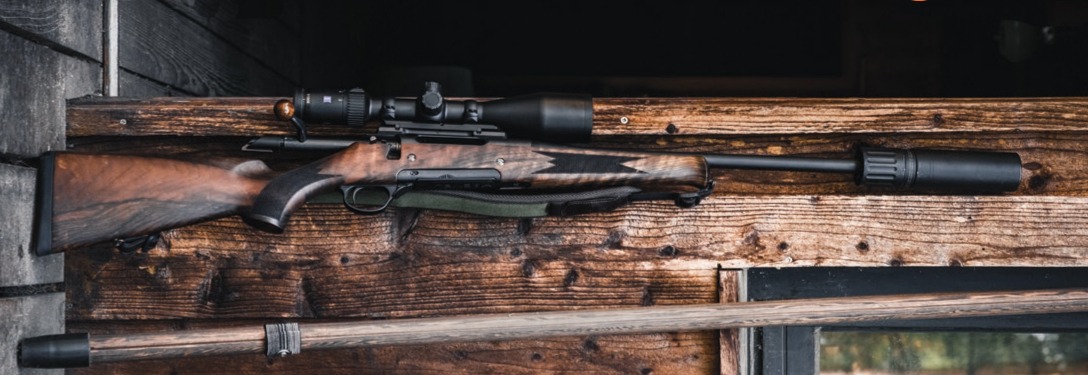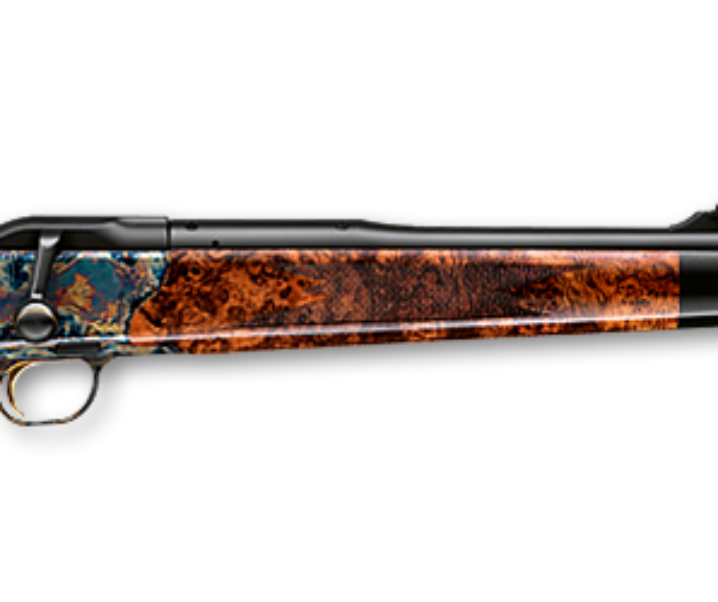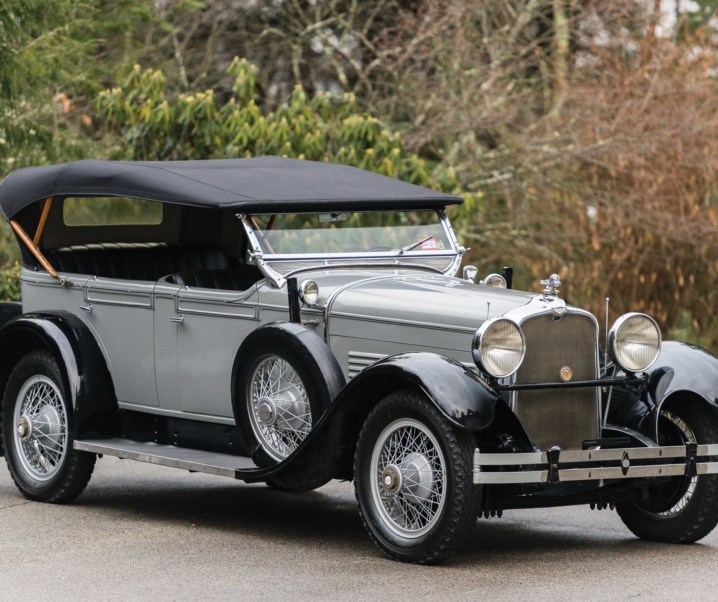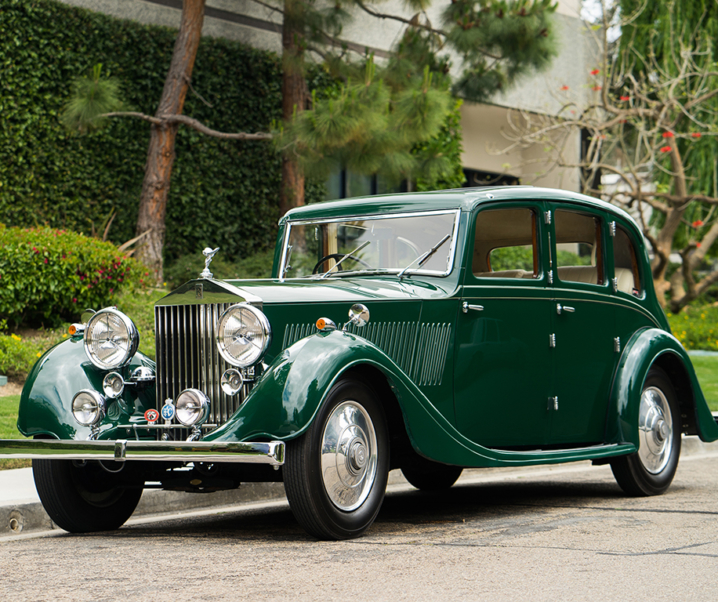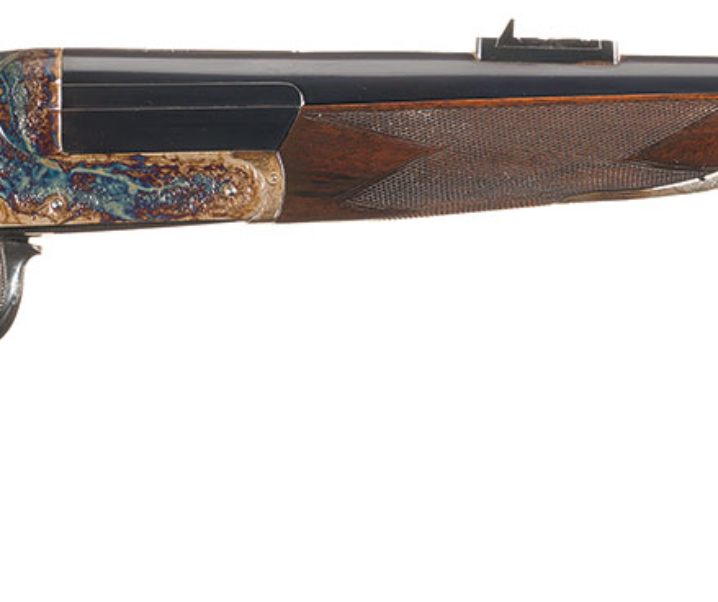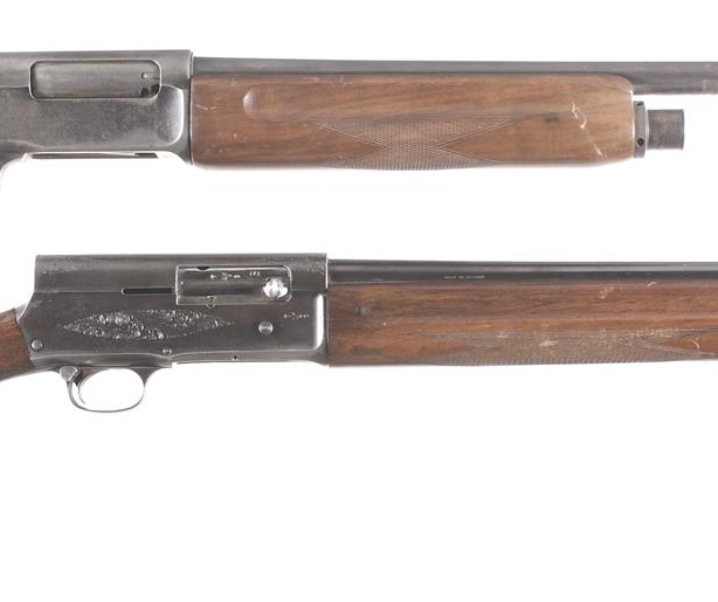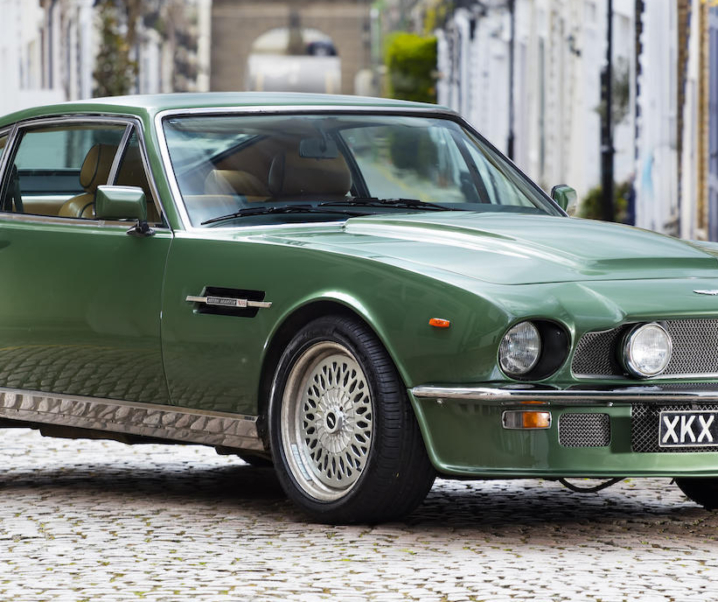The Haenel Jaeger 10 is a German bolt-action hunting/sporting rifle that is superbly designed and made. Although not so well known this rifle deserves to become much more popular.
Available in synthetic stock versions for those wanting a “go anywhere” rifle, and in wood, or even class 4 walnut wood, for those looking for a rifle that is both a thing of beauty, and a very practical hunting rifle.
Fast Facts
- Haenel is a German arms maker which began in 1840.
- The company has a long and illustrious history of making small arms, including the designs of Hugo Schmeisser.
- Haenel entered into the production of hunting and sporting arms in 2009 and the Jaeger 10 is one of the hunting rifles that was created that year.
- The Jaeger 10 is made in standard and deluxe models: the standard models feature either wood or synthetic stocks while the deluxe models feature class 4 walnut.
Company Background
The C.G. Haenel had its beginnings as a maker of arms in 1840, and since that time has been involved in the creation and manufacture of some of Germany’s most famous military small arms including the automatic weapon designs of Hugo Schmeisser: most notably the MP28 sub-machine gun, and the lesser known Mkb 42(H) which was later morphed to become the Sturmgewehr 44 (StG 44) – an arm from which was coined the name “Assault Rifle”.
In 2008 C.G. Haenel was re-established as a part of Merkel Jagd- und Sportwaffen GmbH, and first began with the creation of two military and police rifles: the Haenel RS8 bolt action sniper rifle chambered in 7.62×51 NATO, and in 2009 the Haenel RS9 chambered for the 8.6×70mm (338 Lapua Magnum).
It was in 2009 that the first of the Haenel sporting/hunting rifles debuted, beginning with the Haenel Jaeger 8 (Jaeger being German for hunter).
The Jaeger 8 was an over/under sporting arm made in two versions; the Jaeger 8.10 which was a combination rifle and shotgun (i.e. shotgun barrel over rifle barrel), and the Jaeger 8.11 which was a double-rifle.
The second Haenel sporting arm was the Jaeger 9 break-action single-shot rifle, in the style that the Germans refer to as a Kipplauf.
The Jaeger 10
Haenel introduced their bolt-action hunting rifle, the Jaeger 10, in 2009. This rifle provides some novel design features and seems to be designed with use from the dusty desert conditions of Central Australia to the snow and ice of Alaska or Russia, and all the different weather and geography in between.
The Jaeger 10 was designed so that it could be made as a purely practical hunting rifle of modest cost but excellent quality: and so that it could be made in deluxe versions for those who have a penchant for rifles that are not only functional but also things of beauty, complete with pretty walnut stock.
Features and Operation
The action of the Jaeger 10 is quite conventional: it has a full diameter bolt which has six front locking lugs set in three banks of two, so it provides a 60 degree bolt lift.
I first encountered a rifle with this arrangement when I bought a Mannlicher-Schönauer M72 back in the late 1970’s. The M72 had a controlled round feed design whereas the Jaeger 10 is a push-feed type.
The bolt stop is located on the left side of the receiver and it also provides the anti-bind feature as it runs in a slot in the bolt.
At the rear of the bolt the end of the striker is visible and when the rifle is cocked it protrudes sufficient to provide both tactile and visual indication as to its condition.
The bolt-face is of the typical recessed type with blade extractor and spring plunger ejector.
The two-position three-function safety is located on the right side of the receiver just behind the bolt-handle root. The safety catch is moved to the rear to engage the safe mode: in this position it locks the bolt closed and blocks the trigger bar.

The third function is actuated by a small button that sits under the safety catch when it is in the forward “fire” position, and which is exposed when the safety catch is moved rearwards to the “safe” position. Depressing this button releases the bolt and allows it to be opened with the rifle still on “safe”, so it can be unloaded or loaded in the “safe” condition.
The magazine is steel and is profiled to suit the specific cartridge the rifle is chambered for. This should provide sufficient cartridge retention at the case shoulder to preserve soft-point ammunition from point deformation during recoil.
The base plate of the magazine is of a modern plastic and it provides a good shape for grip even when wearing gloves. The magazine release is a paddle that is forward of the trigger-guard: it is pressed forward to release the magazine. Again this looks to have been designed to make it easy to use when wearing gloves: it also provides ambidextrous operation.
Magazine capacity is four for the 223 Remington, three for all standard calibers such as the 243 Winchester up to the 9.3x62mm, and two for the magnum cartridges (the Jaeger 10 is offered in 7mm Remington Magnum and 300 Winchester Magnum).
There is also a ten shot magazine option for rifles chambered for the 308 Winchester, something that would be very welcome if using the rifle for vermin control or perhaps on a driven game hunt.
The fact that the magazine is metal with a plastic base-plate augers well for its potential longevity.
The trigger guard is plastic which presents advantages and disadvantages: the plastic is arguably less prone to damage, and plastic does not strike cold in freezing weather.
The trigger is of the traditional European single-set type. Back when I started shooting back at the beginning of the 1970’s European rifles such as the Mannlicher-Schönauer and Mauser M1898 and Mauser 66 were commonly fitted with double-set triggers. But in the 1970’s and 1980’s the single set trigger began to become more popular and was found on various rifles such as the Mauser 66 and 77.
The Jaeger 10’s single-set trigger provides a clean single stage trigger of about three pounds weight if the shooter simply presses it: but if the trigger is pushed forward it becomes much lighter and more sensitive, which some shooters prefer.
To unset the trigger one simply applies the safety catch and then opens the bolt by pressing the release button. Opening the bolt will automatically return the trigger to its unset condition. (Of course have the rifle pointing in a safe direction when you do that, done correctly it won’t fire – but as the Irish say “To be sure to be sure”).
The other method of unsetting the set trigger is to apply the safety catch and trip the trigger. This will cause the set trigger to try to fire the rifle but because the safety catch is applied it won’t do that. (Again: make sure the rifle is pointed in a safe direction when you do this). This is the method I prefer and have used on my set-trigger equipped rifles for many years.
The instructions concerning the set trigger are on page 30 of the user manual which you will find if you click here.
The top of the Jaeger 10 is drilled and tapped for rifle-scope mount fitting, and it is profiled to take Remington 700 bases, making rifle-scope fitting an easy task.
The Jaeger 10 is also offered fitted with open sights, which are set on raised ramps to bring them up to a similar height to the rifle-scope line.
The rear sight has three yellow optic fiber dots – one at the bottom and two that sit each side of the rear-sight notch. The front sight is a red optic fiber bead.
Most of the Jaeger 10 models are offered in the following calibers:-
.223 Rem. (12,0″) / .243 Win. (10,0″) / .270 Win. (10,0″) / .30-06 Spring. (11,0″) / .308 Win. (12,0″) / 6,5×55 SE (8,7″) / 8x57IS (9,4″) / 9,3×62 (14,2″) / 7 mm Rem.Mag. (9,5″) / .300 Win.Mag. (11,0″)
This is, in my opinion, a listing of the most popular cartridges world-wide, calibers that are not likely to fall into obsolescence any time soon.
Exceptions to this are the short barrel carbines which are not offered in 7mm Remington Magnum or 300 Remington Magnum for obvious reasons.
The LX “luxury” models add the 7x64mm Brenneke to their calibers on offer. This cartridge has a long history of popularity in Europe, and deservedly so.
The other exceptions are the two Varmint models which add the increasingly popular 6.5 Creedmore to their caliber list.
There is quite a nice succinct overview video from the YouTube Fieldtester channel on this rifle if you click here.
Haenel offers no less than nine variant models of the Jaeger 10, each created to appeal to a shooter’s specific requirements and taste.
Jaeger 10 Standard
The Jaeger 10 Standard features a class 1 wood stock in the classic style with cheek-piece. The action and barrel are finished in a hard non-reflective coating.

The magazine is steel and has a contoured shape to suit the cartridges the rifle is chambered for. The floorplate of the magazine is plastic.
The rifle capacity is 4+1 for the diminutive 223 Remington, 3+1 for standard calibers such as the 30-06, and 2+1 for the Magnums.
Barrel length for standard calibers is 56cm and for magnums 61cm and the barrel is sporter weight tapering down to 17mm diameter at the muzzle.
Jaeger 10 Timber LX
The Jaeger 10 Timber LX is the luxury version of the base rifle and wears a classic styled stock of class 4 walnut, making it a very attractive looking rifle. The bolt knob is wood which both enhances the look of the rifle and its feel.
The metalwork is finished with an Illaflon coating which is corrosion resistant.

The specifications for the LX model is otherwise like that of the Standard model.
Jaeger 10 Timber Lady
Quite a number of rifle-makers in recent years have taken to offering models specifically designed for women and Haenel have also decided to do this.

To make a rifle more suited to a lady’s physique and preferences Haenel provide a Monte-Carlo cheek piece and a slightly lower and more angled butt angle. This puts the butt in better alignment with a woman’s shoulder and distributes recoil forces in a way that is more comfortable.
In addition to this the pistol grip is more vertically angled to adjust for a woman’s smaller hands and finger reach to the trigger.
All that being said if you are a man of slightly smaller stature then you may find that the “Lady” rifle actually fits you better than the standard model. If that’s the case for you then remember that “A real man can buy any rifle that he likes”.
I’m only 5’10” and I would make sure to try this model before I jumped into buying the standard one.
Specifications are generally the same as for the Jaeger 10 Timber LX rifle.
Jaeger 10 Timber Compact
The Jaeger 10 Compact has the luxury features of the LX rifle but with a shorter 51cm barrel with a slightly heavier profile tapering down to 19mm at the muzzle.
This heavier barrel profile keeps the weight of the Jaeger 10 Compact about the same or slightly heavier than the standard rifle models (i.e. around 3.3kg as opposed to the standard models 3.2kg).

The end result is a rifle designed to provide a distinct “between the hands” balance with lively pointing characteristics: a rifle that is short and well suited to being handy even in close cover.
This rifle is well designed for use with such calibers as the 308 Winchester, 30-06, and the powerful 9.3x62mm: it is also very well suited to the use of a sound moderator because of its short barrel keeping the overall length of the rifle practicable.
With its short barrel the Jaeger 10 Compact is not offered in the two magnum calibers: 7mm Remington Magnum and 300 Winchester Magnum, and sensibly so. Both these calibers benefit from having a barrel of around 61-66cm (24-26 inches) and so are best suited to the configuration of the Standard, LX and Lady models.
Calibers for this and the Lady Compact are as follows:-
.223 Rem. (12,0″) / .243 Win. (10,0″) / .30-06 Spring. (11,0″) / .308 Win. (12,0″) / 6,5×55 SE (8,7″) / 8x57IS (9,4″) / 9,3×62 (14,2″)
Jaeger 10 Timber Lady Compact
The Jaeger 10 Timber Lady Compact is, as you might imagine, basically the same as the Jaeger 10 Compact, but with the Lady stock profile.
The Compact is especially suited to use by a woman who is likely to desire to use a sound moderator to help keep her hearing intact. Those of us who have done our share of hunting and vermin control, which was done without hearing protection, have paid the price: I for one have finished up with hearing damage and have to use hearing aids.

The Timber Lady Compact provides the opportunity to use a sound moderator but still having a rifle that is a convenient length.
So, if you live in a jurisdiction where sound moderators are legally permitted then the compact models provide you with a valuable opportunity to preserve your hearing.
Jaeger 10 Synthetic
The Jaeger 10 Synthetic is designed for optimum ruggedness: a rifle that can be taken on any hunting or vermin control expedition without concern for the potential for damage to one’s gorgeous walnut stock.
The Synthetic model is also significantly less expensive than the deluxe LX and Timber models.
The Synthetic stock of this model is made of a fiberglass reinforced material in a dark anthracite color (i.e. charcoal color).

The stock has strategically placed grip surfaces and is made without cheek piece so its symmetrical and can be used by right and left handed shooters.
Specifications and calibers are the same as for the Standard model.
Jaeger 10 Varmint
The Jaeger 10 Varmint is made with a heavier weight barrel than the standard models and is provided with a synthetic stock.
For the Varmint and Varmint Sporter models the barrel tapers down to 19mm but barrel lengths are the same as the Standard model: 56cm for standard calibers and 61cm for the two magnum calibers.

For the Varmint and Varmint Sporter model the caliber availability is a little different and is as follows:-
223 Rem. (12,0″) / .243 Win. (10,0″) / .270 Win. (10,0″) / .30-06 Spring. (11,0″) / .308 Win. (12,0″) / 6,5×55 SE (8,7″) / 6,5 Creedmoor (8,0″) / .300 Win.Mag. (11,0″)
Jaeger 10 Varmint Sporter
The Varmint Sporter is a slightly upgraded model which has an adjustable cheek piece.
Both the Varmint and the Varmint Sporter are fitted with mount points for a bipod and are supplied with a Picatinny rail for optical sight mounting.

Jaeger 10 Compact SD
The Compact SD is a synthetic stock compact model like the wood stocked compact models but made with non-reflecting hard metal finish and fittings for suppressor.
Haenel state that this model features the short silencer barrel with i-Sight system and is matched to the Haenel JGR suppressor from B&T (Switzerland).
As with the other compact short-barrel models the Compact SD is not offered in the two magnum calibers but in the following:-
.223 Rem. (12,0″) / .243 Win. (10,0″) / .30-06 Spring. (11,0″) / .308 Win. (12,0″) / 6,5×55 SE (8,7″) / 8x57IS (9,4″) / 9,3×62 (14,2″)
Conclusion
If you’d like to find out more about the Haenel Jaeger 10 then you should visit their website: you’ll find it if you click here.
I think that this is one of the most interesting rifles to emerge from Germany in recent years: it has certainly piqued my interest.
German engineering quality, the option to have a “go anywhere” synthetic stock or a “thing of beauty” class 4 walnut stock, ease of mounting optics, and its ergonomic common sense design make this a very attractive rifle: and the icing on the cake is that the prices are very reasonable.
This is, in short, a lot of gun for not a lot of money.
Picture credits: All pictures courtesy Merkel Haenel.

Jon Branch is the founder and senior editor of Revivaler and has written a significant number of articles for various publications including official Buying Guides for eBay, classic car articles for Hagerty, magazine articles for both the Australian Shooters Journal and the Australian Shooter, and he’s a long time contributor to Silodrome.
Jon has done radio, television, magazine and newspaper interviews on various issues, and has traveled extensively, having lived in Britain, Australia, China and Hong Kong. His travels have taken him to Indonesia, Israel, Italy, Japan and a number of other countries. He has studied the Japanese sword arts and has a long history of involvement in the shooting sports, which has included authoring submissions to government on various firearms related issues and assisting in the design and establishment of shooting ranges.

